The barbell curl is a quintessential biceps mass builder.
It’s been a staple in bodybuilding routines for decades because it’s one of the simplest and most effective ways to progressively overload your biceps, making it ideal for gaining arm size and strength.
In this expert guide, you’ll learn how to do the barbell curl with proper form, understand what makes it so effective, discover the best alternatives and variations, and more.
Table of Contents
+
Mastering Barbell Curl Form
To master standing barbell biceps curl form, split the exercise into three steps: set up, curl, and descend.
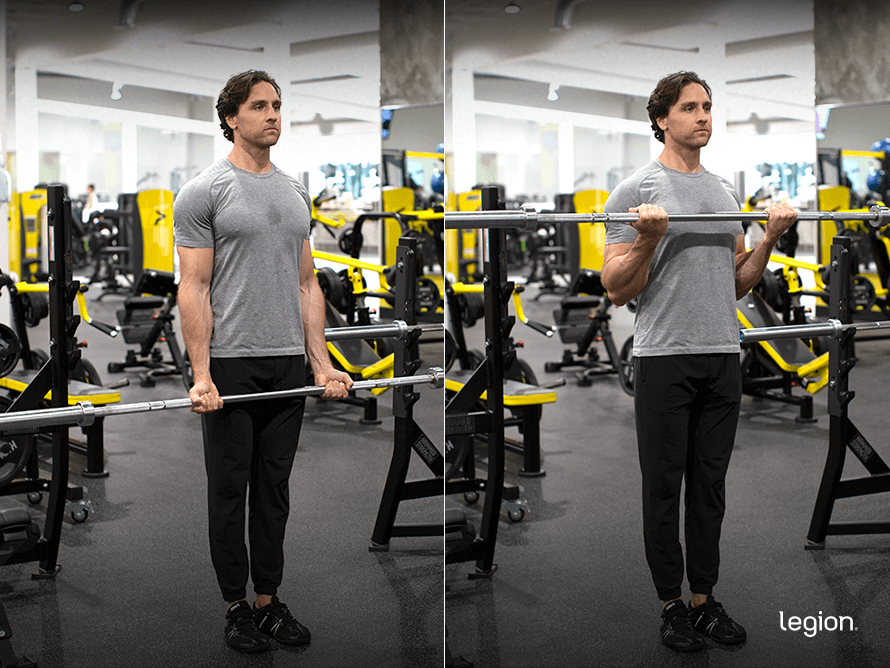
1. Set up
Place a barbell on the floor and load it with plates. Grab the bar with your palms facing away from you a little wider than shoulder-width apart.
Stand up straight, take a deep breath, and brace your core.
2. Curl
Without leaning backward, curl the bar toward your chest until your forearms are roughly perpendicular to the floor.
3. Descend
Reverse the movement and return to the starting position.
Here’s how proper barbell curl form should look when you put it all together:
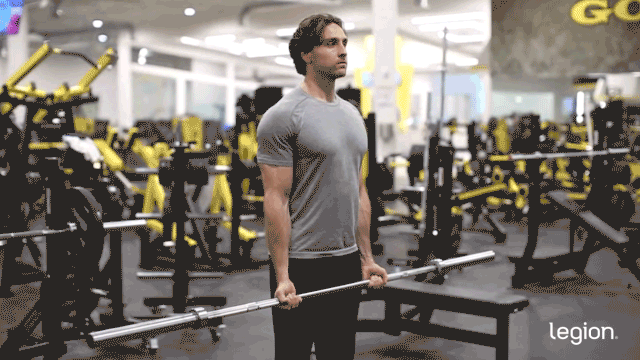
Barbell Curl Benefits
Ideal for Biceps Growth
Research shows that combining compound pulling exercises involving the biceps with targeted biceps exercises like barbell arm curls maximizes biceps growth.
This approach is effective because it allows you to train your biceps at different angles and through varying ranges of motion, which produces more balanced and complete growth than only using compound exercises.
It also ensures you train your “bis” with enough volume (sets) to stimulate growth without other muscles becoming a limiting factor.
Ideal for Gaining Strength
To build strength and size, you must gradually increase the weight you lift—a process called “progressive overload.”
To do this consistently without plateauing or risking injury, it’s usually best to increase the weights you lift in small increments.
Since dumbbells typically increase in fixed, 5-pound jumps, progressing isn’t always practical—sometimes these jumps are too large for isolation exercises like barbell curls.
However, barbells offer more flexibility, allowing you to add as little as 2.5 pounds per side. This makes regular progression more manageable and helps you make more sustainable strength and mass gains.
Easy to Learn
The barbell curl has very few moving parts, so it’s easy to learn, even for those new to weightlifting.
What Do Barbell Curls Work?
The main muscles worked by barbell curls are the biceps brachii (“biceps”), the two-headed muscle on the front of the upper arm between the shoulder and elbow.
It also works your brachialis and forearms to a lesser extent.
Here’s how the biceps look on your body:
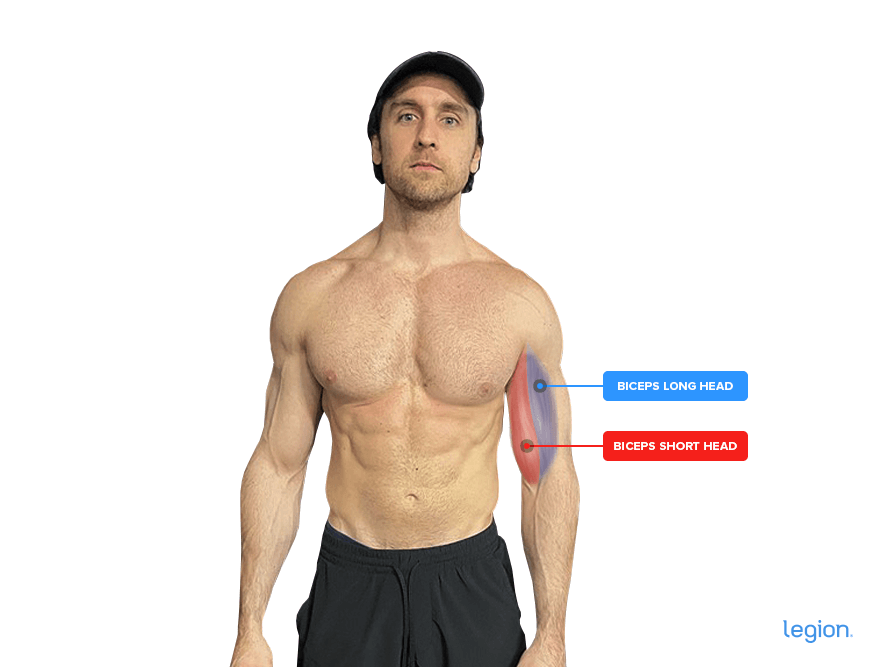
The Best Barbell Curl Variations & Alternatives
1. EZ-Bar Curl
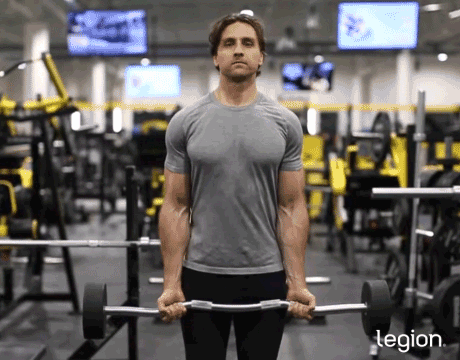
EZ-bar curls and straight bar curls are equally effective for building biceps mass. The difference is that the EZ-bar has a curved handle, which can take strain off your wrists and elbows and make curling more comfortable.
2. Cable Biceps Curl
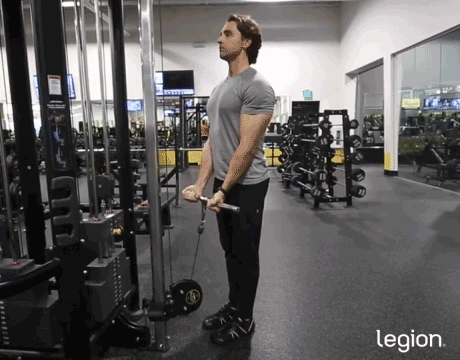
By using a cable, the cable biceps curl maintains constant tension on your biceps throughout the entire range of motion, which trains your biceps differently from free-weight exercises and may help you build bigger arms.
3. Alternating Dumbbell Curl
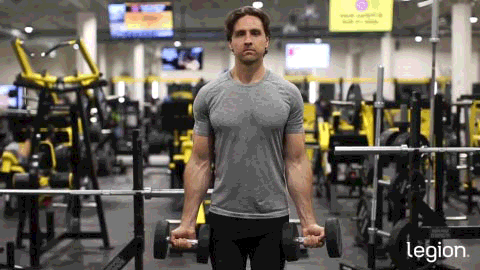
The alternating dumbbell curl trains each side of your body independently, so it’s useful for finding and fixing muscle imbalances and ensuring you gain symmetrical biceps mass.
How to Program the Barbell Curl
Where you position the barbell curl in your workouts depends on your training split.
If you don’t do a dedicated “arm day,” perform the barbell curl toward the end of pull or upper body workout once you’ve finished all of your compound weightlifting for the day. For example, here’s how I recommend programming the barbell curl in my 4-day Bigger Leaner Stronger pull workout:
- Deadlift: 3 sets of 4-to-6 reps with 2-to-4 min rest
- Cable Row: 3 sets of 4-to-6 reps with 2-to-4 min rest
- Chin-up: 3 sets of 4-to-6 reps with 2-to-4 min rest
- Barbell Curl: 3 sets of 6-to-8 reps with 2-to-3 min rest
Alternatively, if you want to include the barbell curl in an arm workout, it’s usually best to perform it near the beginning of your training session. Here’s how it might look:
- Barbell Curl: 3 sets of 6-to-8 reps with 2-to-3 min rest
- Overhead Triceps Extension: 3 sets of 6-to-8 reps with 2-to-3 min rest
- Preacher Curl: 3 sets of 6-to-8 reps with 2-to-3 min rest
- Skullcrusher: 3 sets of 6-to-8 reps with 2-to-3 min rest
Common Barbell Curl Mistakes
Using Momentum
Relying on momentum to “hump” the weight up reduces the work your biceps do and, thus, how much muscle you gain. To prevent yourself from using momentum in the barbell curl, keep your torso, hips, and knees still during each rep.
Letting the Weight Fall
Research shows that controlling the eccentric portion (“lowering” phase) of any biceps curl is a highly effective way to boost muscle growth. As a general rule, you should take the same time to lift the weight as you do to lower it to the starting position—around one or two seconds for each is a good target.
Shortening the Range of Motion
To squeeze out more reps or lift heavier weights, many people shorten the barbell curl’s range of motion. However, when you only complete the top or bottom two-thirds of each rep, you reduce the effectiveness of the exercise.
To maximize biceps gains, lower the weight until your elbows are fully extended and lift it until they are completely bent on every rep. When you can’t maintain this form, it’s time to end your set.
FAQ #1: What do barbell curls and dips have in common?
Not that much, actually. Barbell curls are an isolation exercise for the biceps, while dips are a compound exercise that trains your pecs, shoulders, and triceps.
About the only thing they have in common is that they’re both effective, muscle-building exercises that deserve a place in a well-designed strength training routine.
FAQ #2: Is the barbell curl the best biceps exercise?
The barbell curl is an outstanding biceps exercise because it allows you to lift heavy weights safely and progress regularly. But it’s hard to call it the “best” biceps exercise because each person is unique—what’s optimal for you might not be for someone else.
Instead of looking for the “perfect” biceps exercise, a better option is to include a number of biceps exercises in your workouts that train your biceps in different ways. That’s the real ticket to maximizing biceps growth.
FAQ #3: What’s the difference between the EZ-bar curl and barbell curl?
The primary difference between the EZ-bar curl and barbell curl is the shape of the bar: the EZ-bar has a zigzag shape, while a barbell is straight.
The practical significance of this is that some people find curling an EZ-bar more comfortable because it relieves strain on their wrists and elbows. For others, the difference is negligible.
To see which works best for you, try both exercises. If there’s one you prefer, stick with it. Or, if both feel fine, a good option is to alternate between them every 8-to-10 weeks of training.
This is how I personally like to organize my training, and it’s similar to the method I advocate in my fitness books for men and women, Bigger Leaner Stronger and Thinner Leaner Stronger.
(And if you’d like even more specific advice about what exercises to include in your training program to reach your health and fitness goals, take the Legion Strength Training Quiz, and in less than a minute, you’ll know the perfect strength training program for you. Click here to check it out.)
Scientific References +
- Costa, Bruna Daniella de Vasconcelos, et al. “Does Performing Different Resistance Exercises for the Same Muscle Group Induce Non-Homogeneous Hypertrophy?” International Journal of Sports Medicine, vol. 42, no. 09, 13 Jan. 2021, pp. 803–811, https://doi.org/10.1055/a-1308-3674.
- Schoenfeld, Brad J. “The Mechanisms of Muscle Hypertrophy and Their Application to Resistance Training.” Journal of Strength and Conditioning Research, vol. 24, no. 10, Oct. 2010, pp. 2857–72.
- Farthing, Jonathan P., and Philip D. Chilibeck. “The Effects of Eccentric and Concentric Training at Different Velocities on Muscle Hypertrophy.” European Journal of Applied Physiology, vol. 89, no. 6, 1 Aug. 2003, pp. 578–586, https://doi.org/10.1007/s00421-003-0842-2.










